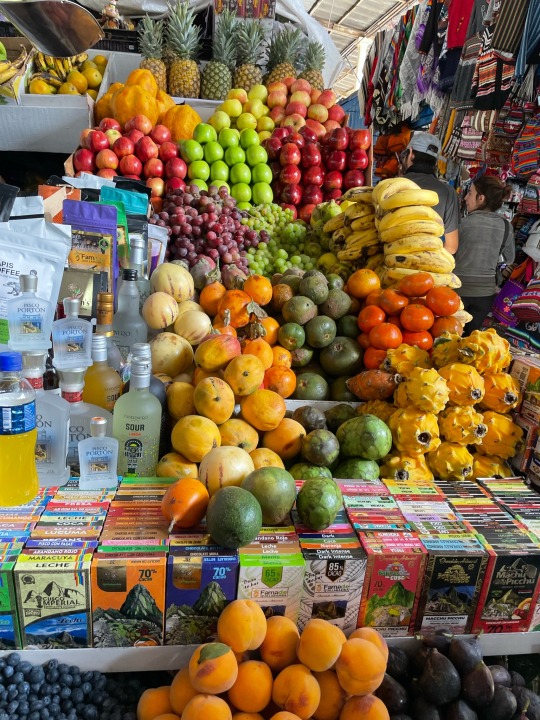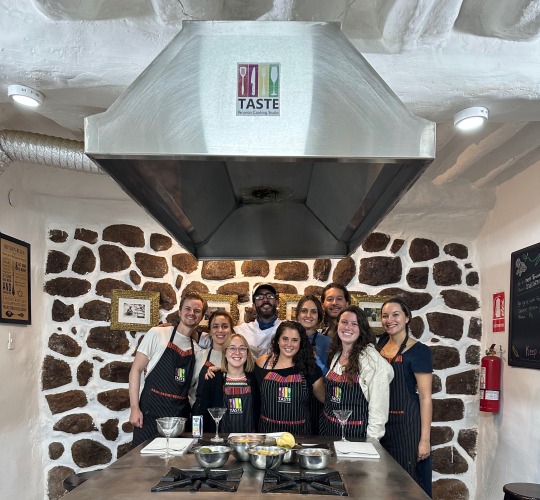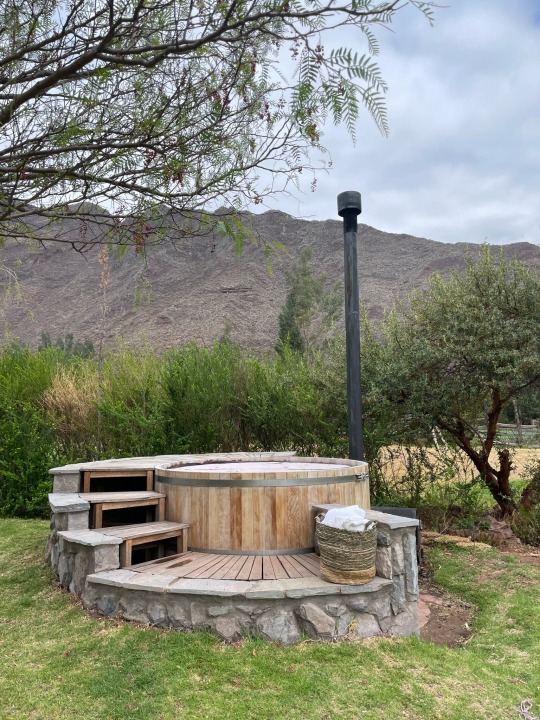#nitrogen market size
Explore tagged Tumblr posts
Text
The growing population has increased concerns about food security, which in turn has led to the need to use nitrogenous composts to provide essential soil additions that will improve the quality of the soil and ultimately yield higher yields.
#Nitrogenous Fertilizers Market#Nitrogenous Fertilizers Market size#Nitrogenous Fertilizers Market growth#Nitrogenous Fertilizers Market share#Nitrogenous Fertilizers Market analysis#Nitrogenous Fertilizers Market demand
0 notes
Text
Nitrogen Purge Equipment Market to Hit $901.3 Million by 2032
What's Trending in Nitrogen Purge Equipment Market?
- Keep Yourself Up-To-Date With The Latest Market Trends.
The global Nitrogen Purge Equipment Market was valued at USD 561.25 Million in 2024 and it is estimated to garner USD 901.3 Million by 2032 with a registered CAGR of 6.1% during the forecast period 2024 to 2032.
Firstly, the Market report for Nitrogen Purge Equipment Market describes the current state of the companies and recommends where it is likely to go next. The report shows the production, revenue, price, market share, and growth rate of each type, mainly divided into Product Types and Product Applications etc.
Additionally, this market report focuses on offering key business measures such as real market moves, market size, qualities, and freedoms, as well as forecast opportunities. This Nitrogen Purge Equipment Market report also offers distinctive insights into wealthy regions such as Europe, North America, the Middle East, Africa, and Latin America.
Get a Sample Copy of the Nitrogen Purge Equipment Market Report at: https://www.vantagemarketresearch.com/nitrogen-purge-equipment-market-0287/request-sample
Top Competitors:
Vadilal Chemicals, Aquila Engineers, Praxair Technology, Airgas, Halliburton, Liquid Packaging Solutions (LPS), Pepperl+Fuchs, Expo Technologies, IKM Testing UK, Epoxy Oilserv, Air Products and Chemicals, GTS.
This market report has all the information you need to start or grow your business in the industry. It also includes market drivers, restraints, competitiveness, and geographic estimates, as well as a price and emerging market structure. It is a complete description of a company's business model, benchmarks, consumer preferences, value proposition, and net profit. This comprehensive Nitrogen Purge Equipment Market study also sheds light on key techniques that help companies truly assess their customers' buying behavior.
It represents global economic trends between 2024 and 2032. With the help of this market research, top companies can easily make smarter financial decisions. This market analysis is an excellent technique to help companies implement new products. It also includes critical data on major industry topics, including market expansions and evolving market conditions.
This well-researched Nitrogen Purge Equipment Market report describes the negative impact COVID-19 is having on various companies and offers companies recommendations on how to recover from the damage suffered by the outbreak as well as the nationwide quarantine. The plan analyzes the company's expectations and priorities, as well as the delivery of all crucial data.
You Can Buy This Report From Here: https://www.vantagemarketresearch.com/buy-now/nitrogen-purge-equipment-market-0287/0
This report analyzes key market segments by type, application, and geography. The geographic analysis section covers key regions such as Europe, North America, the Middle East, Africa, and the Asia-Pacific region.
This Nitrogen Purge Equipment Market report not only provides valuable data but outlines key goals, pricing strategies, and approaches to help market participants' recommendations in this report will make accelerating economic growth easy. It offers some specific tips and business-related data to help new competitors in the market grow their businesses and diversify their product lines. Companies in the industry should choose tactics that include new product launches, mergers, and partnerships to survive in the competitive marketplace and strengthen their position.
Regional Analysis
-North America [United States, Canada, Mexico]
-South America [Brazil, Argentina, Columbia, Chile, Peru]
-Europe [Germany, UK, France, Italy, Russia, Spain, Netherlands, Turkey, Switzerland]
-Middle East & Africa [GCC, North Africa, South Africa]
-Asia-Pacific [China, Southeast Asia, India, Japan, Korea, Western Asia]
The quantitative information in this Nitrogen Purge Equipment Market analysis helps predict future sales and market penetration. This type of information is based on statistics. The qualitative information provided here will greatly help the key players understand the buyer's opinion of your brand. Improving business goals becomes easy with the information provided in this report.
The industries can draw some conclusions about their original goals. In business. This Nitrogen Purge Equipment Market research helps you make assumptions about your competition, customers, and the market in order to make informed business decisions. Additionally, it forecasts the competition in the market for the estimated period of 2024-2032. Effective decision-making in companies leads to business growth and is made possible by this precise market study.
Read Full Research Report with [TOC] @ https://www.vantagemarketresearch.com/industry-report/nitrogen-purge-equipment-market-0287
Some of the Key Questions Answered in this Report:
Which are the five top players of the Nitrogen Purge Equipment Market?
How will the Nitrogen Purge Equipment Market change in the upcoming years?
Which product and application will take a share of the Nitrogen Purge Equipment Market?
What will be the CAGR and size of the Nitrogen Purge Equipment Market throughout the forecast period?
What are the drivers and restraints of the Nitrogen Purge Equipment Market?
Which regional market will show the highest growth?
What is the current industry size, what will the market size be in 2030 and what will the growth rate be?
Who are the major competitors and what is their strategy?
What are the challenges to grow in the industry?
What are the market opportunities and challenges faced by the key vendors?
What are the barriers to entry for new players in the Nitrogen Purge Equipment industry?
Check Out More Reports
Global Asset Integrity Management Market: Report Forecast by 2032
Global Nanotechnology in Medical Devices Market: Report Forecast by 2032
Global Marché des équipements miniers: Report Forecast by 2032
Global Smart Highway Market: Report Forecast by 2032
Global Automotive Carbon Wheels Market: Report Forecast by 2032
#Nitrogen Purge Equipment Market#Nitrogen Purge Equipment Market 2024#Global Nitrogen Purge Equipment Market#Nitrogen Purge Equipment Market outlook#Nitrogen Purge Equipment Market Trend#Nitrogen Purge Equipment Market Size & Share#Nitrogen Purge Equipment Market Forecast#Nitrogen Purge Equipment Market Demand#Nitrogen Purge Equipment Market sales & price
0 notes
Text
Chemical Nitrogen Generators Market: Insights and Forecast to 2031 | Market Strides

Chemical Nitrogen Generators Market Research Report
Market Strides has recently added a new report to its vast depository titled Global Chemical Nitrogen Generators Market. The report studies vital factors about the Global Chemical Nitrogen Generators Market that are essential to be understood by existing as well as new market players. The report highlights the essential elements such as market share, profitability, production, sales, manufacturing, advertising, technological advancements, key market players, regional segmentation, and many more crucial aspects related to the Chemical Nitrogen Generators Market.
Market Overview
Chemical Nitrogen Generators Market overview provides a snapshot of the current state of a specific market, highlighting key trends, growth drivers, challenges, and opportunities. It typically includes an analysis of the market size, competitive landscape, consumer demand, and regulatory factors. Additionally, the overview may touch on emerging technologies or innovations impacting the market, as well as projections for future growth. This concise summary helps businesses and investors understand the market dynamics and identify areas for strategic planning or investment.
Get Free Sample Report PDF @ https://marketstrides.com/request-sample/chemical-nitrogen-generators-market
Chemical Nitrogen Generators Market Share by Key Players
Air Products and Chemical (USA)
Anest Iwata Corporations (Japan)
Atlas Copco (Sweden)
Holtec Gas Systems (USA)
Parker Hannifin Corp (USA)
Chemical Nitrogen Generators Market Segmentation
The report on Global Chemical Nitrogen Generators Market provides detailed toc by type, applications, and regions. Each segment provides information about the production and manufacturing during the forecast period of 2024-2032. The application segment highlights the applications and operational processes of the industry. Understanding these segments will help identify the importance of the various factors aiding to the market growth.
The report is segmented as follows:
By Type
PSA
Membrane
Cryogenic Air
By Application
Chemical
Petrochemical Industries
Get Detailed @ https://marketstrides.com/report/chemical-nitrogen-generators-market
Chemical Nitrogen Generators Market Frequently Asked Question
1) What are Chemical Nitrogen Generators Market and why are they important?
2) What is the future outlook for the Chemical Nitrogen Generators Market?
3) What are the Segments Covered in the Market?
4) Who are the prominent key players in the Market?
Key Highlights
It provides valuable insights into the Chemical Nitrogen Generators Market.
Provides information for the years 2024-2032. Important factors related to the market are mentioned.
Technological advancements, government regulations, and recent developments are highlighted.
This report will study advertising and marketing strategies, market trends, and analysis.
Growth analysis and predictions until the year 2032.
Statistical analysis of the key players in the market is highlighted.
Extensively researched market overview.
Buy Chemical Nitrogen Generators Market Research Report @ https://marketstrides.com/buyNow/chemical-nitrogen-generators-market
Contact Us:
Email : [email protected]
#Chemical Nitrogen Generators Market Size#Chemical Nitrogen Generators Market Share#Chemical Nitrogen Generators Market Growth#Chemical Nitrogen Generators Market Trends#Chemical Nitrogen Generators Market Players
0 notes
Text
According to The Insight “Liquid Nitrogen Market Forecast to 2031 – Global and Regional Share, Trend, and Growth Opportunity Analysis – by Manufacturing Method, End-Use Industry, and Geography".
0 notes
Text
Laboratory Gas Generators Market worth $686 million by 2026
The Global Laboratory Gas Generators Market is projected to reach USD 686 million by 2026 from USD 353 million in 2021, at a CAGR of 14.2% during the forecast period. The growth of the laboratory gas generators market is primarily driven by the growing importance of analytical techniques in drug and food approval processes, rising food safety concerns, increasing adoption of laboratory gas generators owing to their various advantages over conventional gas cylinders, growing demand for hydrogen gas as an alternative to helium, and the increasing R&D spending in target industries. On the other hand, reluctance shown by lab users in terms of replacing conventional gas supply methods with modern laboratory gas generators and the availability of refurbished products are the major factors expected to hamper the growth of this market.
Download PDF Brochure:
Global Nitrogen gas generators Market Dynamics
Market Growth Drivers
Increasing R&D spending in target industries
Growing importance of analytical techniques in drug approval processes
Rising food safety concerns
Increasing adoption of laboratory gas generators owing to their various advantages over conventional gas cylinders
Growing demand for hydrogen gas as an alternative to helium
Market Growth Opportunities
Growing demand for laboratory automation
Opportunities in the life sciences industry
Cannabis testing
Proteomics
Market Challenges
Reluctance to replace conventional gas supply methods with modern laboratory gas generators
Availability of refurbished products
Request 10% Customization:
The hydrogen gas generators segment accounted for the highest growth rate in the Labortaory gas generators market, by type, during the forecast period
Based on type, the laboratory gas generators market is segmented into nitrogen gas generators, hydrogen gas generators, zero air generators, purge gas generators, TOC gas generators, and other gas generators. The hydrogen gas generators segment accounted for the highest growth rate in the Labortaory gas generators market in 2020. This can be attributed to the growing preference for hydrogen as a cost-effective alternative to helium, as it offers faster analysis and optimal results.
Gas chromatography segment accounted for the highest CAGR
Based on application, the laboratory gas generators market is segmented into gas chromatography (GC), liquid chromatography-mass spectrometry (LC-MS), gas analyzers, and other applications. In 2020, gas chromatography accounted for accounted for the highest growth rate. The major factors driving the growth of this is the adoption of hydrogen over helium due to the latter's high cost and scarcity in gas chromatography.
Life science industry accounted for the largest share of the laboratory gas generators market in 2020
Based on end user, the laboratory gas generators market is segmented into the life science industry, chemical and petrochemical industry, food and beverage industry, and other end users (environmental companies and research & academic institutes). The life science industry accounted for the largest share of the global laboratory gas generators market. The major factors driving the growth of this segment are the rising demand for laboratory analytical instruments, increase in drug research activities, and stringent regulations relating to the drug discovery process.
North America accounted for the largest share of the hydrogen gas generators market in 2020
The laboratory gas generators market is divided into five regions, namely, North America, Europe, Asia Pacific, and Rest of the World. North America dominated the global laboratory gas generators market. The large share of the North American region is mainly attributed to the high investments in R&D in the US and Canada, which has led to a higher demand for efficient and advanced laboratory equipment.
Recent Developments:
In 2020, PeakGas launched various laboratory gas generators such as Genius XE SCI 2, MS Bench (G) SCI 2, MS Bench SCI 2, and i-Flow O2 oxygen gas generator.
In 2019, Laboratory Supplies Ltd. (Ireland), a supplier of scientific, industrial, and laboratory apparatus, joined the distributor network of the Asynt Ltd.
Report Highlights
To define, describe, and forecast the laboratory gas generators market by type, application, end user, and region
To provide detailed information regarding the factors influencing the market growth (such as drivers, opportunities, and challenges)
To strategically analyze micromarkets with respect to individual growth trends, prospects, and contributions to the laboratory gas generators market
To analyze market opportunities for stakeholders and provide details of the competitive landscape for market leaders
To forecast the size of the market segments in North America, Europe, Asia Pacific, and the Rest of the World (RoW)
To profile the key players and comprehensively analyze their product portfolios, market positions, and core competencies
To track and analyze competitive developments, such as product launches, expansions, agreements, and acquisitions in the laboratory gas generators market
Key Players:
Hannifin Corporation (US), PeakGas (UK), Linde plc (Ireland), Nel ASA (Norway), PerkinElmer Inc. (US), VICI DBS (US), Angstrom Advanced Inc. (US), Dürr Group (Germany), ErreDue spa (Italy), F-DGSi (France), LabTech S.r.l. (Italy), CLAIND S.r.l. (Italy).
Frequently Asked Questions (FAQ):
What is the projected market revenue value of the global laboratory gas generators market?
The global laboratory gas generators market boasts a total revenue value of $686 million by 2026.
What is the estimated growth rate (CAGR) of the global laboratory gas generators market?
The global laboratory gas generators market has an estimated compound annual growth rate (CAGR) of 14.2% and a revenue size in the region of $353 million in 2021.
#Laboratory Gas Generators Market#Nitrogen Gas Generators Industry Size#Hydrogen Gas Generators Industry Share#Laboratory Gas Generators Market Growth
0 notes
Text
Liquid Nitrogen Market Size, Share, Growth | Report, 2032
IMARC Group has recently released a new research study titled “Liquid Nitrogen Market: Global Industry Trends, Share, Size, Growth, Opportunity and Forecast 2024-2032”, offers a detailed analysis of the market drivers, segmentation, growth opportunities, trends, and competitive landscape to understand the current and future market scenarios.
The global liquid nitrogen market size reached US$ 19.4 Billion in 2023. Looking forward, IMARC Group expects the market to reach US$ 30.9 Billion by 2032, exhibiting a growth rate (CAGR) of 5.2% during 2024-2032.
Global Liquid Nitrogen Market Trends:
The global liquid nitrogen market is experiencing significant growth due to various drivers, including advancements in technology, expanding healthcare and pharmaceutical sectors, and the rising demand in the food and beverage (F&B) industry. Moreover, the increasing product use in electronics and semiconductor manufacturing, the growing metal fabrication industry, and enhanced oil recovery needs are boosting the market growth. Furthermore, the burgeoning chemical sector, escalating demands for cryopreservation, the importance in the automotive industry, and the rise of the renewable energy sector. These factors collectively propel the market forward.
Request to Get the Sample Report: https://www.imarcgroup.com/liquid-nitrogen-market/requestsample
Factors Affecting the Growth of the Liquid Nitrogen Industry:
Advancements in Technology: The global liquid nitrogen market is significantly influenced by technological advancements, which enhance the efficiency of liquid nitrogen production, storage, and transportation. Innovations in cryogenic technology have led to improved insulation methods, minimizing liquid nitrogen evaporation and ensuring more sustainable handling. Modern technology also facilitates the development of sophisticated equipment for various applications, such as cryogenic freezers, which are crucial in healthcare for preserving biological samples.
Expanding Healthcare and Pharmaceutical Sectors: The healthcare and pharmaceutical sectors are pivotal in driving the demand for liquid nitrogen. It is extensively used for the cryopreservation of biological samples, including blood, stem cells, and reproductive cells, which is vital for medical research, regenerative medicine, and fertility treatments. The expansion of biobanks and the increasing investment in biomedical research necessitate reliable cryogenic storage solutions to preserve the integrity and viability of biological specimens over long periods. As these sectors continue to grow, propelled by technological innovations and the increasing importance of biologics, the demand for liquid nitrogen is expected to surge correspondingly.
Rising Demand in the Food and Beverage Industry: Liquid nitrogen plays a critical role in the food and beverage industry, primarily in the preservation and processing of food products. It is used for rapid freezing, which ensures the quality, texture, and nutritional value of food by minimizing the formation of ice crystals that can damage cell structures. This method is ideal for a wide range of products, including meats, seafood, fruits, and ready-to-eat meals. Moreover, liquid nitrogen is employed in the packaging of perishable goods, creating an inert atmosphere that extends shelf life and maintains freshness, thereby meeting the industry's stringent safety and quality standards.
Explore Full Report Description At: https://www.imarcgroup.com/liquid-nitrogen-market
Key Companies:
Air Liquide S.A.
Air Products and Chemicals Inc.
AMCS Corporation
Asia Industrial Gases Pte. Ltd.
Cryomech Inc.
Gulf Cryo
Linde plc
Messer Group GmbH
Statebourne Cryogenics Ltd
Taiyo Nippon Sanso Corporation (Mitsubishi Chemical Holdings Corporation)
Liquid Nitrogen Market Report Segmentation:
By Technology:
Cryogenic Distillation
Pressure Swing Adsorption
Others
Cryogenic distillation is the largest segment by technology in the liquid nitrogen market because it is the most established and efficient method for producing high-purity liquid nitrogen in large volumes, catering to a wide range of industrial applications.
By Function:
Coolant
Refrigerant
Coolant is the largest segment by function because liquid nitrogen is extensively used for its cooling properties in various sectors, including healthcare, food, electronics, and industrial processes, due to its effectiveness in maintaining extremely low temperatures.
By Storage Type:
Cylinders and Packaged Gas
Merchant Liquid/Bulk
Tonnage
Others
Merchant liquid/bulk storage is the largest segment by storage type, as it allows for the economical storage and transportation of large volumes of liquid nitrogen, meeting the high demand from various end-users who require continuous and large-scale supply.
By End User:
Chemicals and Pharmaceuticals
Food and Beverage
Healthcare
Metal Manufacturing and Construction
Rubber and Plastic
Others
Metal manufacturing and construction is the largest segment by end user, as liquid nitrogen is crucial in these industries for processes such as cryogenic grinding, metal processing, and fabrication, providing benefits like improved material properties and enhanced process efficiency.
Regional Insights:
North America
Asia-Pacific
Europe
Latin America
Middle East and Africa
North America is the largest market by region for liquid nitrogen, driven by the presence of a robust industrial base, advanced healthcare and technology sectors, and stringent food safety regulations, all of which contribute to high demand for liquid nitrogen across various applications.
Speak to An Analyst: https://www.imarcgroup.com/request?type=report&id=4423&flag=C
Key Highlights of the Report:
Market Performance (2018-2023)
Market Outlook (2024-2032)
Market Trends
Market Drivers and Success Factors
Impact of COVID-19
Value Chain Analysis
Comprehensive mapping of the competitive landscape
If you need specific information that is not currently within the scope of the report, we will provide it to you as a part of the customization.
About Us
IMARC Group is a leading market research company that offers management strategy and market research worldwide. We partner with clients in all sectors and regions to identify their highest-value opportunities, address their most critical challenges, and transform their businesses.
IMARC’s information products include major market, scientific, economic and technological developments for business leaders in pharmaceutical, industrial, and high technology organizations. Market forecasts and industry analysis for biotechnology, advanced materials, pharmaceuticals, food and beverage, travel and tourism, nanotechnology and novel processing methods are at the top of the company’s expertise.
Contact us:
IMARC Group
134 N 4th St. Brooklyn, NY 11249, USA
Email: [email protected]
Tel No:(D) +91 120 433 0800
United States: +1-631-791-1145
#Liquid Nitrogen Market#Liquid Nitrogen Market Size#Liquid Nitrogen Market Share#Liquid Nitrogen Market Report#Liquid Nitrogen Market Analysis#Liquid Nitrogen Market Trends
0 notes
Text
Nitrogenous Fertilizer Market Size To Reach $94.02 Billion By 2030

Nitrogenous Fertilizer Market Growth & Trends
The global nitrogenous fertilizer market size is estimated to reach USD 94.02 billion by 2030 according to a new report by Grand View Research, Inc. Growth can be attributed to the increasing awareness amongst farmers regarding maintaining nutritional balance in the soil. Increasing population across the globe has generated the need to improve the annual crop yield to feed the population, which has boosted the agriculture sector across the globe. Hydrogen and nitrogen are the major raw materials used for manufacturing nitrogenous fertilizers. Nitrogen is required in large quantities by plants and is the primary nutrient in fertilizers. Hydrogen is a crucial component of ammonia, which is an important ingredient in numerous fertilizers. Nearly all commercial-scale ammonia incorporates nitrogen and hydrogen. Raw material Availability impacts nitrogenous fertilizer prices and production.
Key manufacturers are investing profoundly in R&D activities for launching new products and broadening their product portfolios. Major players in the market are increasing the reach of their products to a larger consumer base by setting up retail outlets at strategic locations in various countries to support farming communities in the respective localities. The Asia Pacific is expected to register significant growth in the coming years owing to the presence of numerous agrarian economies such as China, India, Indonesia, and others in the region. India and China are expected to lead the nitrogenous fertilizer market over the forecast period.
Request a free sample copy or view report summary: https://www.grandviewresearch.com/industry-analysis/nitrogenous-fertilizer-market
Nitrogenous Fertilizer Market Report Highlights
In 2021, urea emerged as the dominating product segment by contributing around 33% of revenue share. This is attributed to the affordable cost of urea as compared to the other products.
Ammonium sulfate was the second-largest product segment and is anticipated to grow at a CAGR of 4.9% by 2030, due to its wide agricultural applications and high solubility.
Cereals & grains segment was the dominant application segment in terms of both in terms of volume and revenue, owing to the increasing demand for food crops such as maize, wheat, barley, rice, and oats.
As of 2021, Asia Pacific was the dominating regional market owing to the existence of large agricultural lands in the region along with the technological advancements in farming methods
Nitrogenous Fertilizer Market Segmentation
Grand View Research has segmented the global nitrogenous fertilizer market report based on the product, application, and region:
Nitrogenous Fertilizer Product Outlook (Volume, Thousand Tons; Revenue, USD Million, 2018 - 2030)
Urea
Methylene Urea
Ammonium Nitrate
Ammonium Sulfate
Ammonia
Calcium Ammonium Nitrate
Others
Nitrogenous Fertilizer Application Outlook (Volume, Thousand Tons; Revenue, USD Million, 2018 - 2030)
Cereals & Grains
Oilseeds & Pulses
Fruits & Vegetables
Others
Nitrogenous Fertilizer Regional Outlook (Volume, Thousand Tons; Revenue, USD Million, 2018 - 2030)
North America
U.S.
Canada
Mexico
Europe
Germany
U.K.
Italy
France
Spain
Netherlands
Asia Pacific
China
India
Japan
South Korea
South America
Brazil
Argentina
Middle East & Africa
Saudi Arabia
Qatar
Egypt
List of Key Players of Nitrogenous Fertilizer Market
Kynoch Fertilizer
Sorfert
Bunge Ltd.
Nutrien Ltd.
Yara
Omnia Holdings Limited
Sasol
Aquasol Nutri
TriomfSA
Rolfes Agri (Pty) Ltd.
OCI Nitrogen
ICL Fertilizers
Eurochem Group AG
CF Industries Holdings Inc.
Koch Fertilizer, LLC
Hellagrolip SA
Coromandel International Limited
Haifa Group
Notore Chemical Industries Plc
Browse Full Report: https://www.grandviewresearch.com/industry-analysis/nitrogenous-fertilizer-market
#Nitrogenous Fertilizer Market#Nitrogenous Fertilizer Market Size#Nitrogenous Fertilizer Market Trends#Nitrogenous Fertilizer Market Growth#Nitrogenous Fertilizer Market Sales
0 notes
Text
#Liquid Nitrogen Market share#Liquid Nitrogen Market size#Liquid Nitrogen Market price#Liquid Nitrogen Market forecast
0 notes
Text
Nitrogen Generators Market Volume Forecast and Value Chain Analysis during 2022-2029

#Nitrogen Generators Market#Nitrogen Generators Market trends#Nitrogen Generators Market size#Nitrogen Generators Market growth
0 notes
Text
Nitrogenous Fertilizers Market was valued at USD 63.90 Bn. in 2023. Nitrogenous Fertilizers Market size is estimated to grow at a CAGR of 5.7% over the forecast period.
Nitrogenous Fertilizers Market Dynamics:
One of the most common compost classes that contains different nitrogen compound blends is nitrogen fertilizer. Following their application to the fields, the composts are ingested by the plants and undergo complex responses that transform them into various structures. Their application improves plant surface and shade, which raises farming profitability.
#Nitrogenous Fertilizers Market#Nitrogenous Fertilizers Market size#Nitrogenous Fertilizers Market growth#Nitrogenous Fertilizers Market share#Nitrogenous Fertilizers Market demand#Nitrogenous Fertilizers Market analysis
0 notes
Text



Princess Tree - Paulownia tomentosa
Today's Plant Profile is a little different, I wanted to cover an 'invasive' that fascinated me.
Before I begin I wanted to dissect my terminology on invasive, the term is often thrown at plants without considering a racialized and often problematic methodology on how we relate to these species. Invasive species are typically advantageous in the face of disturbance and quick to colonize altered areas, the monumental spread of invasives is a direct result of euro-centric land commodification, international trade and colonization. These species would not be as 'destructive' as they are without dramatic change to wildspaces/once-thoroughly-managed landscapes. You don't have to love these plants but understand that they often occupy spaces we disturbed, and that doesnt mean i want monocultures of introduced species but we should analyze what makes them thrive the way they do. I usually cover natives species to a document a dramatic loss I noticed in my lifetime however every plant has a good story behind.
To start let's identify the Princess Tree! Best known for their showy pink-lavender foxglove like flowers, perfect structural form, and massive leaves. This tree can grow up 90 feet, it's extremely fast growing, full trees can form between bricks (see 2 images below). The massive leaves are heart-shaped cataylpa-like often exceeding a foot in size (I see people use them as umbrellas in a pinch). The bark is pretty light in color, younger bark is speckled then becomes furrowed with age. The flowers are rather large, about the size of my palm (image 2), typically growing in large triangular clusters. In fall and winter, flowers typically form this large rough shell (see branch cuttings below) that splits overtime, more about that later.

The Princess Tree has a very rich folklore and introduced history behind it. According to my Chinese classmates the Princess Tree gets it's name from an old story about a beloved betrothed Princess who was transformed into this tree by a trickster, her husband-to-be was transformed into a Phoenix and it's said that when a ruler as great as she returns the Phoenix will land on its branches. I see (mostly western anecdotes) claim that this tree is planted when girls are born and the wood is used as a dowry, my classmates did not agree with this (take note these are landscape students). The wood is very sought-after in east Asia as it is sturdy and light, occasionally some american cities will sell the wood from invasive groves back to China, how fascinating!
The introduced history comes in two parts. The first the tree was initially sold as an ornamental originating from the Dutch east India company, the tree reached America by the 1830s. Due to the structure of the tree itself up into the mid century, modernist designers LOVED this tree, I've seen so many architectural drawings lovingly depicting it's big leaves. The second interesting facet about this tree's spread is that certain Chinese porcelain companies used to use the seed pods as a form of packing peanuts. Since the porcelain was primarily shipped by train in continent the tree quickly took hold around rail lines, if you look in philadelphia the oldest trees are around the railroads. The tree was able to survive in the desolate railway soils because it (like most invasive species) is able to derive nitrogen directly from the atmosphere into its roots. That's why you see these babies growing directly in a brick wall like below, crazy right?

The Princess Tree's native range is central to Western China, not much is know about it's natural habitat because literal millenia of civilization scale landscape changes. What is known is that the tree was typically found in dry-ravines and open valleys. Due to the movement of interesting botanical species the tree found found itself everywhere, even in Catherine the Great's royal garden and eventually into colonial-core markets. In America its currently invasive from Pennsylvania to Florida but can be found in almost every major city.
As said before it typically only invades disturbed locations, it's a pioneer species therefore it's advantageous in areas of full sun, poor soil, and generally super dry. The tree can honestly grow anywhere but typically only thrives in that disturbance niche, it has trouble invading older growth forests. The tree itself usually doesn't live more than 70ish years and after that a new ecology typically sprouts from the area it formerly inhabited, this tree is very good at building a fertile soil network from its nitrogen rich leaves. It must be said that this tree does rootsprout vigorously, and these sprouts can grow a shocking 15 feet in one growing season!!! Trees derived from seed usually take 3 years to reach that size (see my alleyway below)...for basically any oak it would take like 10 years to maybe reach that.

As for ethnobotanical usage, this is invasive so I'm going to recommend you just use this tree to death honestly. The massive leaves are very rich in nitrogen and make great compost. Leaves also make an umbrella in a pinch. The tree is super vigorous and a rapid grower so you can imagine it makes great coppice (and for my silvoculturists: leaves makes good animal fodder). The flowers have a lovely scent and look like foxglove without the poison (and they last a while). The wood is quite light lovely and workable, it reminds me of a lighter colored black locust. Apparently this tree also utlizes C⁴ photosynthesis which utilizing a different compound of carbon to derive energy, that's kind of interesting. It has a lot of great qualities honestly, as far as invasives go I really like this tree.
If you want to plant this tree...don't <3...there's enough, go to any city to experience it. In Eastern America some good alternatives are northern catalypa or black locust. If any of my Chinese followers know the full Princess story I would love to hear about it! As always happy hunting!
#plant profiles#invasive species#princess tree#Paulownia tomentosa#plants of eastern North America#plants from China
6 notes
·
View notes
Text
When I joined an international trading company in 2005, I began discovering the demands of final markets. Brazil, at that time, was already one of the largest urea consumers in the world. However, most of the imported urea was in prilled form. Those days are now gone. Today, if I’m not mistaken, around 95 percent of Brazil's urea imports consist of granular urea. The same can be said for the US, all of Europe, and many other countries.
So, why has granular urea become more widely used than prilled urea in the last 15–20 years? Primarily, this shift has occurred due to advancements in agricultural practices and the evolving needs of farmers. Granular urea offers several advantages that have driven this change, making it the preferred choice for modern farming.
Granular urea is physically larger and more uniform in size compared to prilled urea. This uniformity allows for better mechanical handling and more precise application using modern spreading equipment. The consistency in size reduces the risk of uneven application, which can lead to over-fertilisation in some areas and under-fertilisation in others. This precision is particularly important in large-scale farming operations, where efficiency and accuracy are crucial.
Granular urea tends to be more resistant to environmental factors, such as wind and moisture, compared to prilled urea. The larger, denser granules are less likely to be blown away by wind or to absorb moisture from the air, which can cause caking or dissolution before application. This stability helps ensure that the fertiliser remains effective until it reaches the soil, reducing waste and improving overall crop yield.
The physical properties of granular urea make it more compatible with other types of fertilisers in blended applications. Farmers often use blends of different nutrients tailored to specific crop needs, and the uniform size and density of granular urea allow for better mixing with other fertiliser components. This compatibility is key in precision agriculture, where specific nutrient delivery is critical for optimising crop production.
Granular urea generally has a slower release rate compared to prilled urea. This slower release helps reduce nitrogen volatilisation, where nitrogen is lost to the atmosphere as ammonia gas before it can be absorbed by the soil. This reduction in volatilisation means that more of the applied nitrogen is available for plant uptake, improving the efficiency of fertiliser use and reducing environmental impact.
As global agriculture has evolved, there has been a greater demand for fertilisers that support large-scale, intensive farming practices. Fertiliser manufacturers have responded by increasingly producing granular urea to meet this demand. Additionally, as more regions adopt mechanised farming techniques, the advantages of granular urea over prilled urea have become more apparent, further driving the shift in usage.
To summarise, as I have mentioned in my previous post, education and more sophisticated farming operations are key to these developments.
#urea #brazil #fertilisers #fertilizers #imstory #usa #europe #eu

2 notes
·
View notes
Text
Plant based foods people claim are unethical/not vegan/proof vegans are bad/ whatever, ordered by least to most " legitimate".
Quinoa-One news article said foreigners buying quinoa would make a staple crop inaccessible to locals, this is stupid cause we grow crops to meet demand, also being from the Andes Quinoa grows in temperate places as well as potatoes do. Also, the locals already transitioned to a western diet.
Agave- The Greater long nosed bat is an endangered species that relies partially but not exclusively on Agave plants for nectar. Agave or "century" plants are long lived and die after blooming. They are mainly grown and harvested before flowering for Tequila production. a very small amount of wild agave in harvested for bootleg mescal in some regions. The main threats of the bats are habitat loss to agriculture, roost disturbance, and persecution as mistaken for vampire bats. If anything, the agave is threatened by a shortage of bats.
Figs- the inside of a fig consists of flowers that are pollinated by a fig-wasp, which lay their eggs in figs. Female wasps go on to lay eggs in other figs while males are trapped inside and are digested inside the fig. wild wasps obviously aren't harmed by fig harvest. and most fig trees grown today don't rely on pollination too fruit.
Cashew-The outside of a raw cashew contains a shell that contains anacardic acid, a major skin irritant. Workers are exposed to it when the outer shell is peeled before the cashews are cooked. workers are sometimes given gloves but not always, the only mentions of slave-labor I could find in the Cashew industry involved prisoners.
Palm oil- Palm oil has been the main crop behind the deforestation in Malaysia and Indonesia in the 21st century, but considering Indonesia's population size and rapid industrialization, the deforestation feels almost inevitable. Is far from the best oil (look at pongame oil trees, or algae) but it produces more calories per land area than the most dominant competitors like canola/corn/soy/coconut/olive etc. Additionally, though trace amounts of Palm oil may show up in many western products, it is mainly being used as a cooking oil in Asia.
Soybeans- Occasionally I'll see someone (presumably British) jump to soy as an example of an exotic food that is harmful cause it's imported. As an American I find this surreal cause soy is a boring standard crop, the second largest in land use after corn, mainly grown as the default legume for nitrogen fixation, but I understand an export market means an import market somewhere else. additionally, over 3/4s of soy is fed to livestock. Soy production alongside cattle ranching are major drivers of Amazon deforestation, but again most is fed to livestock. It also has a higher yield per acre than beans, peas or peanuts.
Rice- Rice is sometimes considered a major source of agricultural emissions, Rice is one of the most important crops, and the still water it grows in is a source of methane as anaerobic bacteria decompose matter. Since wetlands are generally considered better at carbon capture than dry land, I question rice farms net impact compared to other crops, and rice produces more tons per acre than wheat (though admittedly less than corn), so it is unclear.
Tea- tea is a very labor-intensive crop as young leaves are harvested by hand by workers, and slavery seems relatively common in the tea industry. having people walk through thick shrubbery, reaching hands in bushes, is a recipe for wildlife conflict. Leopard attacks on and venomous snake bites on tea plantations are an issue. However, all the tea in the west is just the powder at the bottom from actual tea production for the Asian market. so, it doesn't increase demand.
Chocolate/Coffee (not counting Kopi-Luwak)- I am lumping these two together because they are broadly similar in many ways. Both have very high carbon footprints, land use, and eutrophying emissions per Kg of food produced compared to other plant-based foods. both are primarily grown in former tropical forests, both contain high levels of caffeine and are neither produce nor staple crops, and both are well known to have very high rates of child labor and slavery in them for anyone paying attention. Thankfully these problems are well known enough that many certification schemes (Fair Trade, Rainforest alliance certified, bird friendly coffee, etc.) that can be used to guide purchases. If anything, I would prioritize coffee over chocolate because 1) assuming your already Vegan you're already selecting for higher end dark chocolate/specialty vegan chocolate that is likely better in other ways and 2) I am assuming most people consume more coffee than chocolate.
Almonds- 55% of the world's almonds are grown in the US. Almonds are sometimes scapegoated for water shortages, but Animal agriculture is far the main driver, and all nut trees are very water thirsty. Almonds need hot dry climates but the same is true of pistachios. More interesting is bees. only 2.9% of captive honeybee hives are in the US. 40.8% of Beekeeper profit in the US is from pollination service, with 82.2% of that coming from Almonds. Almonds may contribute more to bee exploitation per serving than other crops. avocados, blueberries, blackberries, canola, cocoa, cranberries, cherries, cucumbers, honey dew melons, kiwis, pears, pumpkins, raspberries, strawberries, and watermelons, among many others, are also pollinated by managed honeybees. because American honeybees are such a small share of the global population, and the share of Almonds grown in the US is so high compared to other crops, I do believe, but only with a low degree of confidence, almonds are worse for honeybees than the average honeybee pollinated crop. The good news is between new self-fertilizing verities catching on, pollination being 5% of an almond producer's production costs, pollinating machines, and native bee conservation measures, the importance of honeybees to almond production will likely gradually diminish.
Coconut- It seems that kidnapped wild southern pig-tailed macaques are used to produce nearly all coconuts in Thailand, being used as labor picking coconuts. The practice is likely present in other Southeast Asian countries as an American practically all coconut products I could readily access come from Latin America, but it's something it would be a good idea for Old Wolders to be aware of.
8 notes
·
View notes
Text

Good morning! I hope you slept well and feel rested? Currently sitting at my desk, in my study, attired only in my blue towelling robe, enjoying my first cuppa of the day. Welcome to Too Much Information Tuesday.
There are 328 people in the US called Abcde.
Signs saying 'Beware Of Pickpockets' attract pickpockets.
In ancient Rome, women used tampons soaked in opium.
The best time of the day for hand-eye co-ordination is 8pm.
Fear of heights only begins six weeks after a baby learns to crawl.
Half the buyers of vinyl records in the US don’t own a record player.
The average Briton lies about how they really feel 11 times per week.
The happier a bird is, the jazzier and more free-form its singing will be.
Prisoners in California can reduce their sentences by opting to fight forest fires.
Red lipstick boosts waitresses' tips from male customer but not from female ones.
At a food safety conference in Baltimore in 2014, 100 attendees got food poisoning.
Hippos can retract their testicles over a foot into their body to stop rivals biting them.
Until the reign of Henry VIII, kitchen assistants in the Royal household worked naked.
A cyberchondriac is someone who scours the internet looking for details of their illnesses.
There is more toxic nitrogen dioxide in London's Oxford Street than anywhere else in the world.
As a teenager, Sean Paul was on the Jamaican national teams for both swimming and water polo.
Before the invention of colour TV, 75% of people reported dreaming in black and white. Today, only 12% do.
William The Conqueror banned capital punishment. Instead, criminals had their eyes or testicles removed.
Robert Mugabe's wife, Grace, received her PhD from the University of Zimbabwe two months after she enrolled.
King Harold didn't die at the battle of Hastings from an arrow in the eye: he was hacked apart by four Norman knights.
Astronomers at the Allen Telescope Array in California always keep champagne in their fridge in case they discover alien life.
George Orwell named '1984's torture chamber Room 101 after a BBC conference room where he endured countless, boring meetings.
When Stephen Hawking gave a lecture in Japan, he was asked not to mention the possible re-collapse of the universe in case it affected the stock market.
There is no strong evidence that having sex, going for a walk or eating spicy food helps to induce labour in pregnancy. Nipple stimulation, however, has been shown to work.
By the end of her life, Queen Victoria's bust measured seven inches more than her height (5’ 0”). Did the maths for you: 67 inches! Search “Norma Stitz” to see what that looks like!
The oldest known British joke dates from the 10th century. Found in a book of Anglo-Saxon poetry, it reads, "What hangs at a man’s thigh and wants to poke the hole that it’s often poked before? Answer: A key."
Your dreams get weirder during the night. Shortly after you fall asleep, your dreams are most likely to be about things you did or saw during the day, but as the night wears on they become increasingly detached from reality.
In 1923, a jockey named Frank Hayes won a race at Belmont Park in New York despite being dead. He suffered a heart attack mid-race, but his body stayed in the saddle until his horse crossed the line for a 20-1 outsider victory.
Aphrodite of Knidos was one of the first full-size female nude statues in Greek history. According to ancient Greek historian, Lucian of Samosata, it was so lifelike that a man broke into the temple where it was housed to attempt to have sex with it.
In 1978, Isaac Asimov judged a local limerick contest and deemed this entry to be the best out of 12,000: “The bustard’s an exquisite fowl, With minimal reason to growl, He escapes what would be, Illegitamacy, By grace of a fortunate vowel.”
In 1996, a Hong Kong gangster kidnapped the son of the richest man in Asia and demanded a $130 million ransom for his return. After receiving the money, the gangster later called the billionaire and asked him for advice on how he should invest the money.
French gangster Albert Spaggiari was arrested after his gang stole 60 million francs worth of valuables from a bank. At his trial, he distracted the judge, then leaped out of a window and fled on a motorcycle specially set up for him. He was never caught.
The single biggest expense in the Lego Universe video game was hiring a team of moderators to detect if anyone had built Lego penises. Lego Universe was supposed to be the Lego MMO to rule them all but the PC-exclusive title disappeared from existence not too long after its launch. Despite the team's best efforts, their dong detection software just couldn't keep up with the sheer amount of inappropriate player erections popping up everywhere.
Okay, that’s enough information for one day. Have a tremendous and tumultuous Tuesday! I love you all.
#mixcloud#mi soul#dj#music#new blog#lockdown#coronavirus#books#democracy#brexit#cronyism#election#radio#tuesdaymotivation
8 notes
·
View notes
Text
Laboratory Gas Generators Market worth $686 million by 2026
The Global Laboratory Gas Generators Market is projected to reach USD 686 million by 2026 from USD 353 million in 2021, at a CAGR of 14.2% during the forecast period. The growth of the laboratory gas generators market is primarily driven by the growing importance of analytical techniques in drug and food approval processes, rising food safety concerns, increasing adoption of laboratory gas generators owing to their various advantages over conventional gas cylinders, growing demand for hydrogen gas as an alternative to helium, and the increasing R&D spending in target industries. On the other hand, reluctance shown by lab users in terms of replacing conventional gas supply methods with modern laboratory gas generators and the availability of refurbished products are the major factors expected to hamper the growth of this market.
Download PDF Brochure:
Global Nitrogen gas generators Market Dynamics
Market Growth Drivers
Increasing R&D spending in target industries
Growing importance of analytical techniques in drug approval processes
Rising food safety concerns
Increasing adoption of laboratory gas generators owing to their various advantages over conventional gas cylinders
Growing demand for hydrogen gas as an alternative to helium
Market Growth Opportunities
Growing demand for laboratory automation
Opportunities in the life sciences industry
Cannabis testing
Proteomics
Market Challenges
Reluctance to replace conventional gas supply methods with modern laboratory gas generators
Availability of refurbished products
The hydrogen gas generators segment accounted for the highest growth rate in the Labortaory gas generators market, by type, during the forecast period
Based on type, the laboratory gas generators market is segmented into nitrogen gas generators, hydrogen gas generators, zero air generators, purge gas generators, TOC gas generators, and other gas generators. The hydrogen gas generators segment accounted for the highest growth rate in the Labortaory gas generators market in 2020. This can be attributed to the growing preference for hydrogen as a cost-effective alternative to helium, as it offers faster analysis and optimal results.
Gas chromatography segment accounted for the highest CAGR
Based on application, the laboratory gas generators market is segmented into gas chromatography (GC), liquid chromatography-mass spectrometry (LC-MS), gas analyzers, and other applications. In 2020, gas chromatography accounted for accounted for the highest growth rate. The major factors driving the growth of this is the adoption of hydrogen over helium due to the latters high cost and scarcity in gas chromatography.
Life science industry accounted for the largest share of the laboratory gas generators market in 2020
Based on end user, the laboratory gas generators market is segmented into the life science industry, chemical and petrochemical industry, food and beverage industry, and other end users (environmental companies and research & academic institutes). The life science industry accounted for the largest share of the global laboratory gas generators market. The major factors driving the growth of this segment are the rising demand for laboratory analytical instruments, increase in drug research activities, and stringent regulations relating to the drug discovery process.
North America accounted for the largest share of the hydrogen gas generators market in 2020
The laboratory gas generators market is divided into five regions, namely, North America, Europe, Asia Pacific, and Rest of the World. North America dominated the global laboratory gas generators market. The large share of the North American region is mainly attributed to the high investments in R&D in the US and Canada, which has led to a higher demand for efficient and advanced laboratory equipment.
Recent Developments:
In 2020, PeakGas launched various laboratory gas generators such as Genius XE SCI 2, MS Bench (G) SCI 2, MS Bench SCI 2, and i-Flow O2 oxygen gas generator.
In 2019, Laboratory Supplies Ltd. (Ireland), a supplier of scientific, industrial, and laboratory apparatus, joined the distributor network of the Asynt Ltd.
Report Highlights
To define, describe, and forecast the laboratory gas generators market by type, application, end user, and region
To provide detailed information regarding the factors influencing the market growth (such as drivers, opportunities, and challenges)
To strategically analyze micromarkets with respect to individual growth trends, prospects, and contributions to the laboratory gas generators market
To analyze market opportunities for stakeholders and provide details of the competitive landscape for market leaders
To forecast the size of the market segments in North America, Europe, Asia Pacific, and the Rest of the World (RoW)
To profile the key players and comprehensively analyze their product portfolios, market positions, and core competencies
To track and analyze competitive developments, such as product launches, expansions, agreements, and acquisitions in the laboratory gas generators market
Key Players:
Hannifin Corporation (US), PeakGas (UK), Linde plc (Ireland), Nel ASA (Norway), PerkinElmer Inc. (US), VICI DBS (US), Angstrom Advanced Inc. (US), Dürr Group (Germany), ErreDue spa (Italy), F-DGSi (France), LabTech S.r.l. (Italy), CLAIND S.r.l. (Italy).
Frequently Asked Questions (FAQ):
What is the projected market revenue value of the global laboratory gas generators market?
The global laboratory gas generators market boasts a total revenue value of $686 million by 2026.
What is the estimated growth rate (CAGR) of the global laboratory gas generators market?
The global laboratory gas generators market has an estimated compound annual growth rate (CAGR) of 14.2% and a revenue size in the region of $353 million in 2021.
Report Link: ( Laboratory Gas Generators Market )
#Laboratory Gas Generators Market#Nitrogen Gas Generators Industry Size#Hydrogen Gas Generators Industry Share#Laboratory Gas Generators Market Growth
0 notes
Text
The Sacred Valley
Impulsive like me, Irene booked a last minute trip to come visit me in Cusco. Only a few days before she left, Jonathan decided to tag along as well. They arrived on Thursday morning and I met up with them briefly before their walking tour.
We connected again for a romantic dinner at Rucula where we sat and chatted for hours. It was so nice to have them in town! For dessert, we met up with Garrett at Qucharitas to split some peculiar nitrogen ice cream flavors along with picarones which is a type of donut made with sweet potato, squash, and star anise. That makes it healthy right?


On Friday morning I actually had a lot of work to do, but I finally managed to make it out to a not so quick lunch with Irene. Later, a bunch of the tribers met up at the San Blas Market to start off our cooking class. Our chef gave us a tour, which was needed due to the sheer size of the market and the variety of its offerings.

Once we got to the kitchen, we made maracuyá sours - cocktails with ice, pisco, passionfruit, eggwhites, and simple syryp. For the appetizer we assembled a Japanese-influenced ceviche and for the main course we made quinoa-encrusted oyster mushrooms/alpaca. With all the jokes back and forth, we never thought we would make it out of there to catch our bus to the Sacred Valley. We actually had to skip dessert!


The majority of the group rented a lavish house together in the Sacred Valley. In the morning, chefs made a nice breakfast spread before we got ready to get on our tour bus. Due to a series of miscommunications and unfortunate circumstances, the bus was an hour late so some of us took a stroll around the town of Urquillos. The town appeared to be run by stray dogs although there was soon to be a mayoral race which was split on the important issues - corn vs. cows.

Our first adventure for the day was an ATV tour to Moray which is a terraced architectural Inca site. Along the way, we got a great view of the landscape and saw a variety of livestock. Next, we climbed to the top of the Ollantaytambo ruins which signifies the beginning of the Inca Trail to Machu Picchu.


The last stop of the trip was the Maras Salt Mines which are composed of over 5,000 pools and were established over 500 years ago. Back at the house, chefs cooked us dinner and we started heating the wood-fired hot tub. We spent the majority of the night in the tub, which we squeezed 10 of us into! The night ended with s'mores around the fire pit.

Sunday was spent at Mountain Views Maras which is a glamping spot with, as expected, expansive mountain views, a nice restaurant, and alpacas, llamas, and horses. All afternoon, we fed the animals with corn husks and did photoshoots. It was so special being able to be in such close proximity to these big animals for a prolonged period of time.

On our way back home we stopped at a textile place where they gave us a demo on how the yarn is made and dyed.
4 notes
·
View notes